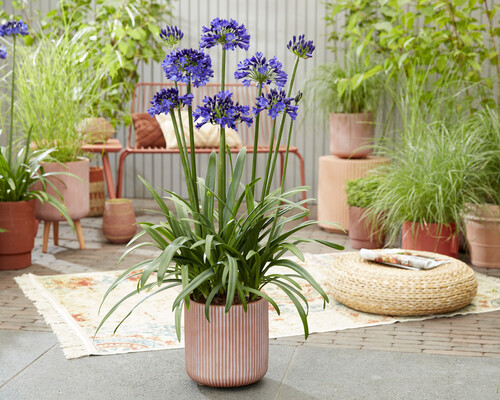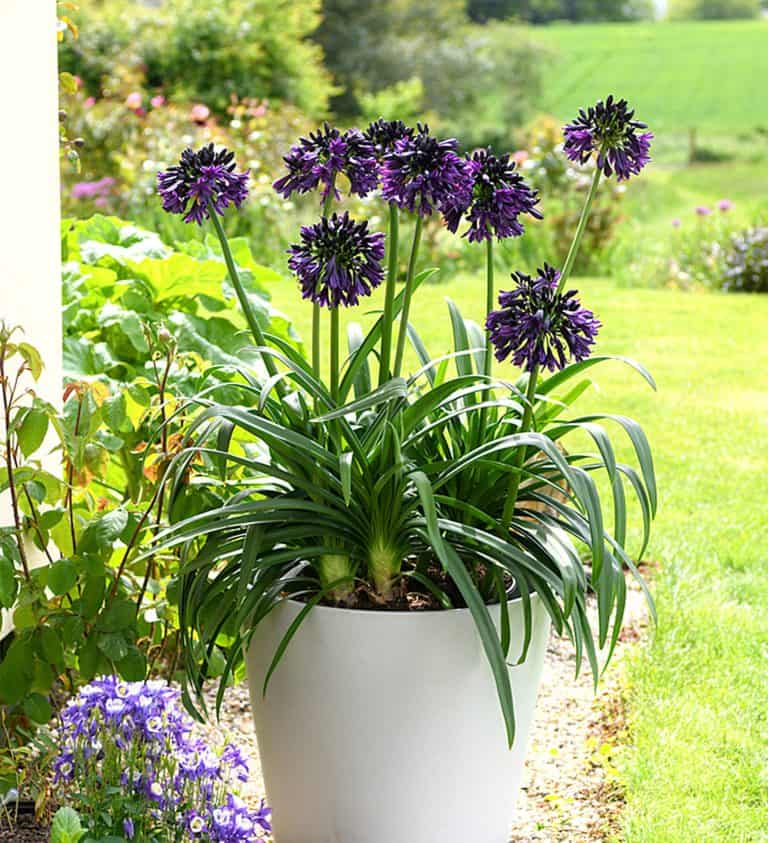Letting Loose the Secret to Effective Agapanthus Farming: Idea for a Flourishing Garden
In the realm of gardening, cultivating agapanthus successfully requires a tactical technique that incorporates various aspects of plant care. With mindful interest to information, one can open the tricks to supporting these magnificent blossoms, bring about a yard that prospers with elegance and vibrancy. By recognizing the nuances of agapanthus growing, one can produce an environment where these plants thrive and bloom abundantly. In the adhering to conversation, we will check out necessary ideas and techniques that will guide you in the direction of a prospering agapanthus yard, using insights into ideal methods, soil conditions, watering techniques, and extra.
Growing Agapanthus: Best Practices
When growing Agapanthus, correct dirt preparation is crucial for making sure successful development and development of these gorgeous flowers. Agapanthus, frequently referred to as Lily of the Nile or African lily, grows in well-draining soil with a somewhat acidic to neutral pH level - Agapanthus. Prior to planting, it is essential to modify heavy clay dirts with organic matter such as garden compost or peat moss to boost drainage and give vital nutrients for the plants
To plant Agapanthus, select an area that obtains complete sunshine to partial color, as this will certainly promote healthy and balanced growth and bountiful flowering. Dig an opening twice the diameter of the plant's origin ball and put the Agapanthus at the same depth it was previously expanding. Delicately backfill the hole with soil, pushing down firmly to get rid of any type of air pockets around the origins.
Water the freshly planted Agapanthus completely and remain to keep the soil evenly damp, specifically during the plant's active growing period. Agapanthus. Using a well balanced fertilizer once a month can better support the plant's growth and flowering. By complying with these finest techniques for planting Agapanthus, you can produce a magnificent display of these fascinating blossoms in your yard
Perfect Soil Conditions for Agapanthus
For optimum development and growing success of Agapanthus plants, guaranteeing the dirt problems are optimal is vital. Agapanthus prospers in well-draining dirt with a somewhat acidic to neutral pH level ranging from 6.0 to 7.0. This kind of soil enables for appropriate water drainage, preventing waterlogging which can bring about root rot. To boost dirt drainage, consider adding raw material such as compost or peat moss when preparing the planting site. Furthermore, Agapanthus chooses soil that is rich in nutrients, so incorporating a balanced fertilizer during the growing season can advertise healthy growth and dynamic flowers.

Watering and Fertilizing Tips
To guarantee healthy and balanced development and vivid blossoms, proper watering and fertilizing techniques are necessary for effective Agapanthus cultivation. Agapanthus plants take advantage of routine watering, specifically throughout the expanding period. It is advised to water deeply as soon as a week, guaranteeing the soil is moist but not waterlogged. During hot weather or in pots, even more constant watering might be essential to stop the dirt from drying entirely.
When it comes to feeding Agapanthus, a well balanced plant food with equivalent components nitrogen, phosphorus, and potassium can be applied in the spring to advertise healthy and balanced development and flowering. Slow-release fertilizers are perfect for offering nutrients gradually over an extended duration. Prevent over-fertilizing, as this can result in excessive vegetation development at the expense of flowers.
Furthermore, integrating organic issue like compost right into the dirt can improve nutrient levels and boost dirt structure, assisting in the general wellness of the Agapanthus plants. By adhering to these watering and fertilizing tips, garden enthusiasts can ensure their Agapanthus plants thrive and generate sensational screens of flowers.
Trimming and Deadheading Techniques
Correct pruning and deadheading strategies play a critical function in maintaining the health and visual appeals of Agapanthus plants, enhancing the necessary practices of watering and feeding for successful growing. Pruning Agapanthus entails removing invested flower heads, dead a fantastic read or yellowing fallen leaves, and general shaping of the plant to advertise better development. Deadheading, the process of getting rid of faded blossoms, not only improves the plant's look but likewise urges more blooming.
When deadheading Agapanthus, it is a good idea to snip off the flower stem at the base making use of sharp, clean shears. This process reroutes the plant's energy from seed production back right their explanation into root and vegetation growth, promoting a healthier and extra robust plant. Routine deadheading can prolong the growing period of Agapanthus and stop self-seeding, which can bring about overcrowding.
In regards to trimming, Agapanthus normally gain from a light trim after blooming to clean the plant and encourage fresh growth. Cutting down the spent flower stems and removing any kind of damaged or dead vegetation aids keep the plant's vitality and total look. Nonetheless, it is necessary to stay clear of reducing right into the crown of the plant, as this can damage its wellness.

Protecting Agapanthus From Vermins and Diseases
Applying efficient insect and disease management strategies is crucial to guarding the health and wellness and vitality of Agapanthus plants in cultivation. Agapanthus are usually sturdy plants, but they can still succumb different insects and illness if not properly taken care of. One typical pest that influences Agapanthus is the Agapanthus borer, a caterpillar that passages into the plant, creating damage to the fallen leaves and flowers. To avoid invasions, regular examination of the plants is vital. If borers are spotted, they can be by hand eliminated, or insecticidal soap can be made use of as a control procedure.
In enhancement to parasites, Agapanthus are vulnerable to illness such as root rot and fungal leaf spots. By staying alert and attending to go to this website bug and condition problems immediately, garden enthusiasts can assist their Agapanthus thrive and flourish.

Final Thought
In final thought, successful growing of agapanthus calls for appropriate planting methods, perfect dirt conditions, appropriate watering and feeding, routine trimming and deadheading, and protection from bugs and conditions. By following these tips and techniques, gardeners can make certain a growing yard filled with attractive agapanthus blooms. Agapanthus. Keep in mind to keep consistent care and interest to information to promote the wellness and durability of these magnificent plants
When planting Agapanthus, appropriate soil preparation is necessary for guaranteeing effective development and advancement of these gorgeous blossoms.Water the recently planted Agapanthus completely and continue to maintain the dirt evenly moist, especially throughout the plant's energetic growing season.For ideal growth and flowering success of Agapanthus plants, guaranteeing the soil conditions are excellent is crucial. When planting or transplanting Agapanthus, ensure the dirt is well-prepared to give the essential structure for the plants to develop themselves effectively. One usual pest that influences Agapanthus is the Agapanthus borer, a caterpillar that passages into the plant, triggering damages to the leaves and blossoms.